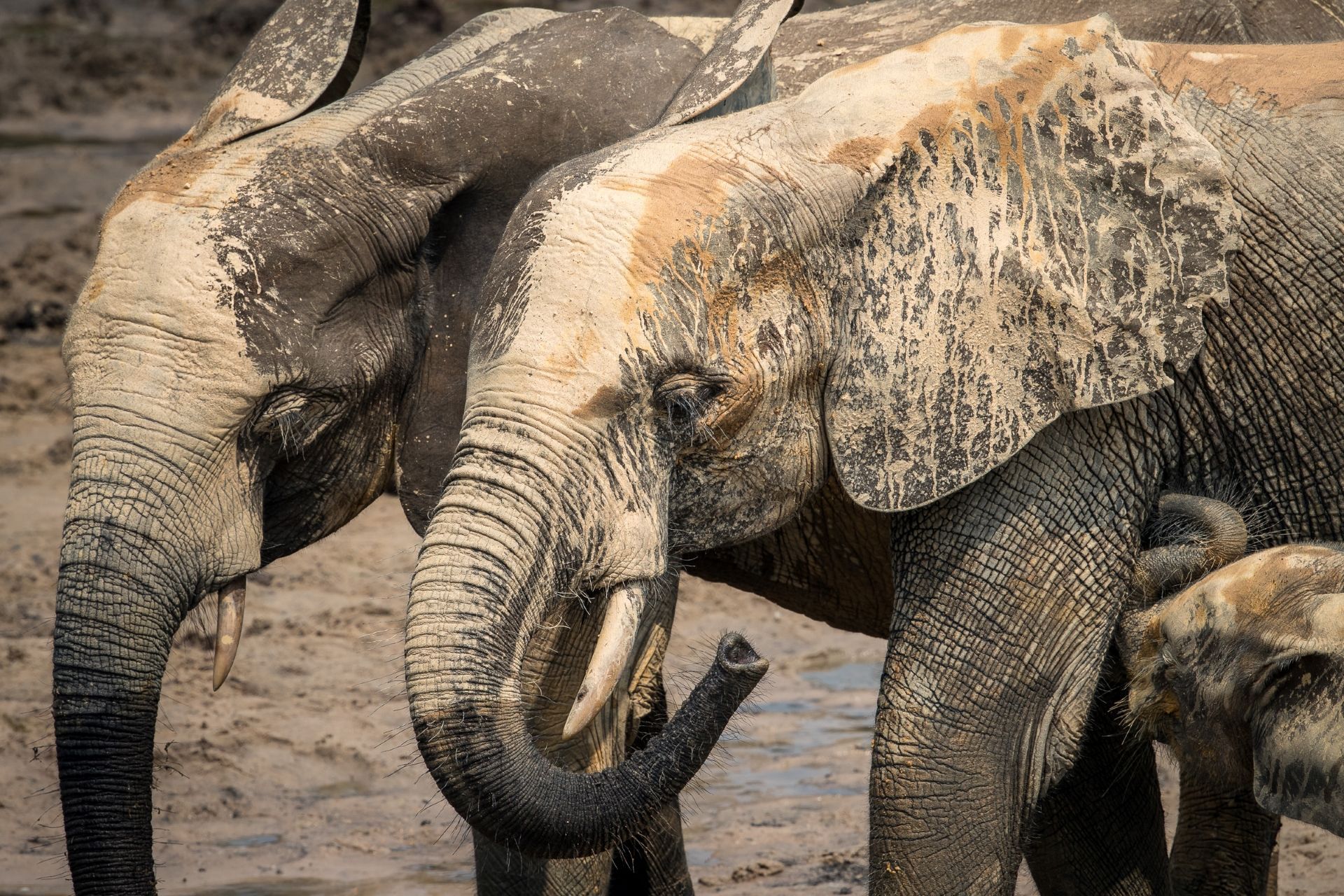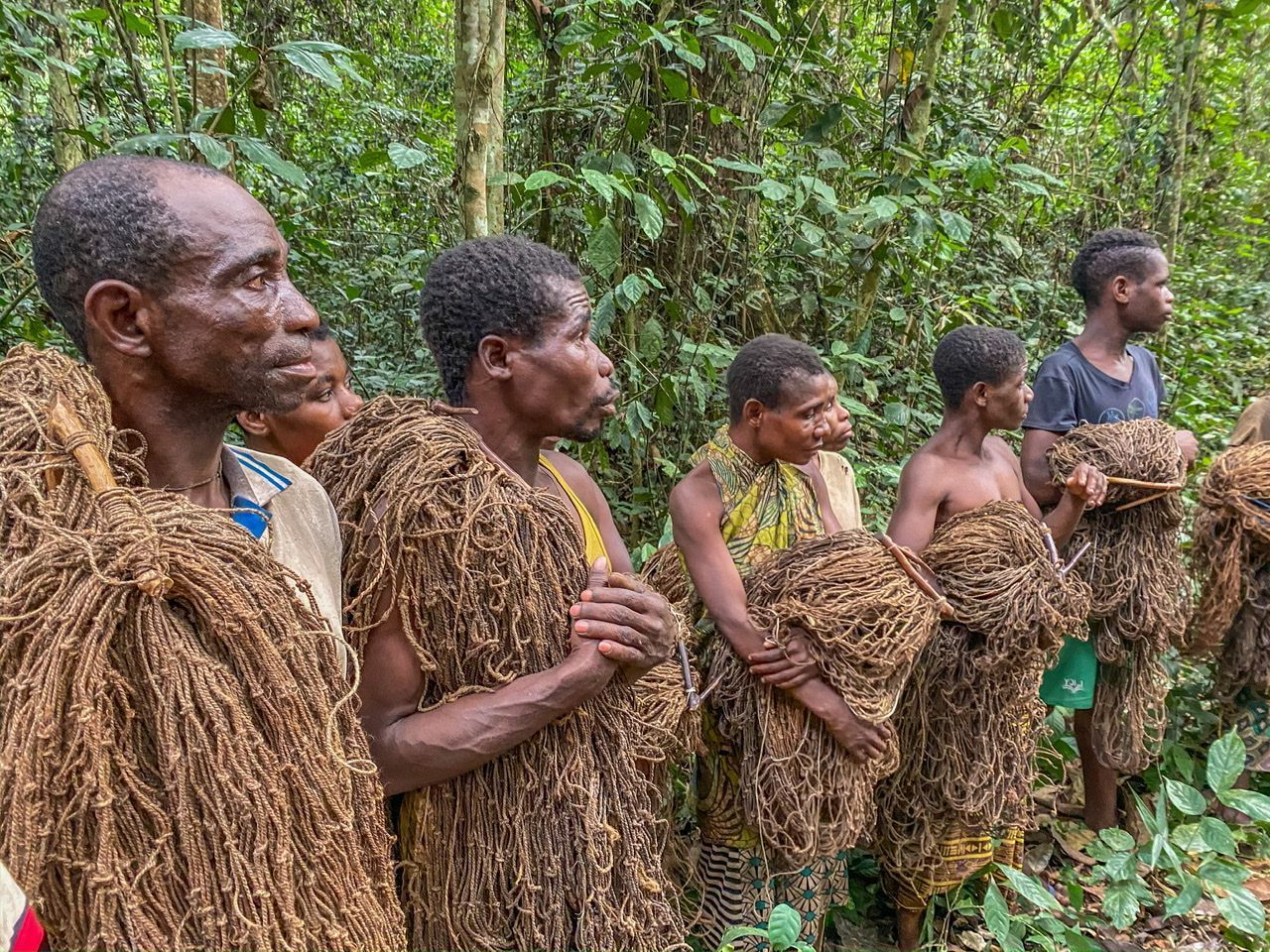LOCATION
Redefining "remote"
Explore Africa's
last great wilderness
Bordering the protected area of Dzanga-Sangha Special Reserve, the Sangha Concession is rich in biodiversity and ripe for the exploring. Once a hunting concession, all commercial hunting stopped when Rod and Tamar Cassidy acquired it in 2009, allowing resident species to thrive and affording additional protection to the forest through a constant human presence.
Dzanga-Sangha is a UNESCO World Heritage Site and covers some 3,369km2 of tropical moist forest in the northern-most region of the Congo Basin, with Cameroon to the west and the Republic of Congo to the east. It's an intricate mosaic of streams and rivers, dense forest, open clearings known as "bais" (pronounced "buys") and swampland that's teeming with life.
The Congo Basin itself spans six countries - Cameroon, Central African Republic, Democratic Republic of Congo, Republic of Congo, Equatorial Guinea and Gabon and is home to the second-largest rainforest on the planet, after the Amazon in South America.
Known as the "heart of Africa", sitting as it does at the centre of the continent, the Sangha Concession is about as remote as it gets from a safari point of view, offering a genuine retreat, far from the madding crowds and concrete jungles that make urban existence so stressful.
Explore Africa's last great wilderness
Bordering the protected area of Dzanga-Sangha Special Reserve, the Sangha Concession is rich in biodiversity and ripe for the exploring. Once a hunting concession, all commercial hunting stopped when Rod and Tamar Cassidy acquired it in 2009, allowing resident species to thrive and affording additional protection to the forest through a constant human presence.
Dzanga-Sangha is a UNESCO World Heritage Site and covers some 3,369km2 of tropical moist forest in the northern-most region of the Congo Basin, with Cameroon to the west and the Republic of Congo to the east. It's an intricate mosaic of streams and rivers, dense forest, open clearings known as "bais" (pronounced "buys") and swampland that's teeming with life.
The Congo Basin itself spans six countries - Cameroon, Central African Republic, Democratic Republic of Congo, Republic of Congo, Equatorial Guinea and Gabon and is home to the second-largest rainforest on the planet, after the Amazon in South America.
Known as the "heart of Africa", sitting as it does at the centre of the continent, the Sangha Concession is about as remote as it gets from a safari point of view, offering a genuine retreat, far from the madding crowds and concrete jungles that make urban existence so stressful.
Dzanga Bai
Where life congregates en-masse
The most famous of the clearings in the Dzanga-Sangha Special Reserve, if not the entire Congo Basin, Dzanga Bai is a large open area in the otherwise dense rainforest where large herds of forest elephant, forest buffalo and bongo antelope gather, along with a multitude of other wildlife and bird species.
Visible from space, Dzanga Bai (also known as the "village of elephants") attracts this cornucopia of animals thanks to its mineral-rich soil and water, creating one of the most sought-after game viewing experiences in Africa. Here you can experience flocks of African Grey Parrots, a variety of hornbills from the worlds two smallest species - the Dwarf Hornbills - to Africa’s largest forest-dwelling hornbill - the Black Casqued Hornbill; giant forest hogs and many of the 10 species of monkey that occur in the rainforest.
A 9m-high observation platform gives you panoramic views out over the bai and an excellent position from which to photograph both the clearing and the wildlife that visit it. It's not uncommon to have more than 100 forest elephants enjoying the water and mud of the bai at the same time, spread out over this 10ha area.
Dzanga Bai
Where life congregates
en-masse
The most famous of the clearings in the Dzanga-Sangha Special Reserve, if not the entire Congo Basin, Dzanga Bai is a large open area in the otherwise dense rainforest where large herds of forest elephant, forest buffalo and bongo antelope gather, along with a multitude of other wildlife and bird species.
Visible from space, Dzanga Bai (also known as the "village of elephants") attracts this cornucopia of animals thanks to its mineral-rich soil and water, creating one of the most sought-after game viewing experiences in Africa. Here you can experience flocks of African Grey Parrots, a variety of hornbills from the worlds two smallest species - the Dwarf Hornbills - to Africa’s largest forest-dwelling hornbill - the Black Casqued Hornbill; giant forest hogs and many of the 10 species of monkey that occur in the rainforest.
A 9m-high observation platform gives you panoramic views out over the bai and an excellent position from which to photograph both the clearing and the wildlife that visit it. It's not uncommon to have more than 100 forest elephants enjoying the water and mud of the bai at the same time, spread out over this 10ha area.

Wildlife
Redefining biodiversity
With around 105 mammal species recorded so far, varying in size from small mice and bats to forest elephants and western lowland gorillas, the wildlife of the Dzanga-Sangha Special Reserve is as varied as it is plentiful.
Many species found here exist nowhere else or are endemic to the Congo Basin, making the words "rare" and "endangered" synonymous with this incredible place. Among these are Africa's two arboreal pangolin species - the white-bellied or tree pangolin and the black-bellied or long-tailed pangolin - as well as the secretive and rarely seen giant pangolin.
Antelopes include the elusive sitatunga and the colourful bongo, the largest of the antelope species found in the rainforest. Around 400 species of birds have been recorded in and around Dzanga Sangha, including the Red-Headed Picathartes, African Grey Parrot and Hartlaub's Duck.
Besides the more charismatic wildlife species, the region is renowned for its wealth of small mammals, butterflies, reptiles and amphibians.
Wildlife

Redefining biodiversity
With around 105 mammal species recorded so far, varying in size from small mice and bats to forest elephants and western lowland gorillas, the wildlife of the Dzanga-Sangha Special Reserve is as varied as it is plentiful.
Many species found here exist nowhere else or are endemic to the Congo Basin, making the words "rare" and "endangered" synonymous with this incredible place. Among these are Africa's two arboreal pangolin species - the white-bellied or tree pangolin and the black-bellied or long-tailed pangolin - as well as the secretive and rarely seen giant pangolin.
Antelopes include the elusive sitatunga and the colourful bongo, the largest of the antelope species found in the rainforest. Around 400 species of birds have been recorded in and around Dzanga Sangha, including the Red-Headed Picathartes, African Grey Parrot and Hartlaub's Duck.
Besides the more charismatic wildlife species, the region is renowned for its wealth of small mammals, butterflies, reptiles and amphibians.

The Ba'aka people
A rich and fascinating culture
The Dzanga-Sangha region of the Congo Basin has been inhabited by humans for more than 50,000 years with the Ba’aka people among the most well-known of the approximately 150 distinct ethnic groups. These semi-nomadic hunter-gatherers have an extensive understanding of its plants and animals, with a collective knowledge passed down over the millennia.
Our local Ba’aka benefit directly from tourism and work with us to help conserve and protect the rainforest and the plants and animals that call it home. Our interactions with the Ba’aka are not staged and allow guests to experience a completely authentic insight into the daily lives of these fascinating, warm and hospitable people and their ancient way of life.
The Ba'aka people

A rich and fascinating culture
The Dzanga-Sangha region of the Congo Basin has been inhabited by humans for more than 50,000 years with the Ba’aka people among the most well-known of the approximately 150 distinct ethnic groups. These semi-nomadic hunter-gatherers have an extensive understanding of its plants and animals, with a collective knowledge passed down over the millennia.
Our local Ba’aka benefit directly from tourism and work with us to help conserve and protect the rainforest and the plants and animals that call it home. Our interactions with the Ba’aka are not staged and allow guests to experience a completely authentic insight into the daily lives of these fascinating, warm and hospitable people and their ancient way of life.

